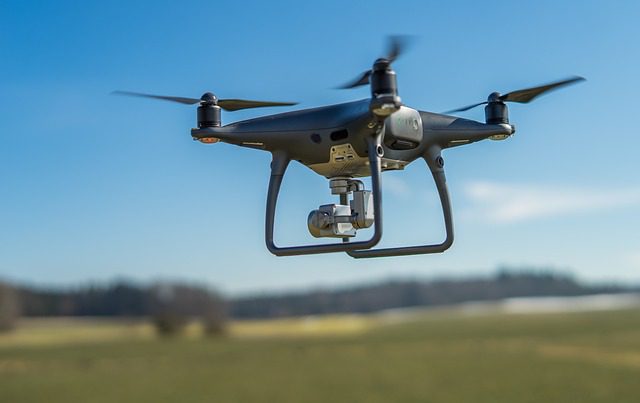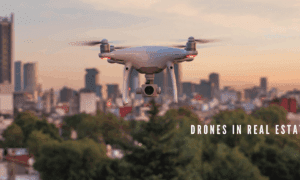Roof inspections have long been a necessary but hazardous task. However, the advent of drone technology is revolutionising the industry, offering safer, more efficient, and cost-effective solutions. This article explores how drones are transforming roof inspections, from their technological capabilities to their regulatory implications.
Traditional Roof Inspections and Their Challenges
For decades, roof inspections have been carried out manually, requiring professionals to use ladders, scaffolding, or lifts to assess a property’s condition. While effective, these traditional methods come with several challenges:
- Safety Risks: Inspectors face hazards such as falls, unstable surfaces, and exposure to harsh weather conditions. Roof-related accidents are among the most common causes of workplace injuries in construction and property maintenance.
- Time-Consuming Process: Setting up safety equipment, accessing difficult areas, and manually recording observations can take hours or even days, delaying necessary repairs and maintenance.
- High Costs: Hiring skilled labour and using specialised equipment such as scaffolding, harnesses, and cranes can be expensive, particularly for large or complex structures.
- Limited Accessibility: High-rise buildings, steep-sloped roofs, and fragile roofing materials can make inspections difficult or even impossible without additional safety measures, leaving many areas unchecked.
Drone Technology in Roof Inspections
Drones, or Unmanned Aerial Vehicles (UAVs), have revolutionised the roofing industry by providing an advanced, safer, and more efficient alternative to manual inspections. Equipped with high-resolution cameras, thermal imaging sensors, and AI-powered analytics, drones can capture detailed roof conditions without the need for physical access.
Drone inspections are now widely adopted across Australia’s construction, real estate, and property maintenance sectors. Increased regulatory acceptance, advancements in AI-driven analytics, and cost-effectiveness have made drones an indispensable tool for roof inspections.
The Evolution of Roof Inspection Technology
From Manual to Digital Inspections
Historically, roof inspections relied on physical assessments and handheld cameras. While aerial photography from helicopters provided some improvements, the costs and impracticality for smaller projects limited its widespread use. Manual inspections often lacked accuracy and could result in overlooked issues, leading to costly repairs in the long run.
Rise of Drones in Construction and Real Estate
With the emergence of affordable, high-quality drones, real estate developers, insurance companies, and property managers now rely on drone-based assessments for faster, more accurate evaluations. The Australian government and regulatory bodies are also supporting drone technology as a safer, more sustainable infrastructure monitoring solution, with increased investment in training and licensing programs for drone pilots.
Benefits of Drone Roof Inspections
1. Safety Enhancements
Reduced Risk for Inspectors
Drones eliminate the need for professionals to physically access dangerous areas, significantly reducing the risk of falls and workplace injuries. This also leads to lower insurance premiums for businesses conducting roof inspections.
Inspection of Hard-to-Reach Areas
From high-rise buildings to steeply sloped roofs, drones can effortlessly inspect areas that would otherwise be challenging or hazardous for human inspectors. They are particularly useful for heritage buildings, where physical inspections may cause structural damage.
Minimising Structural Damage During Inspection
Unlike traditional methods that require inspectors to walk on the roof—potentially causing damage—drones conduct non-invasive inspections, preserving the integrity of the roofing materials. This is especially beneficial for aging structures or roofs with delicate materials like clay tiles or slate.
2. Efficiency and Speed
Rapid Deployment and Data Collection
A drone can inspect a roof within minutes, capturing high-resolution images and transmitting real-time data for immediate analysis. Unlike manual inspections, which may take several hours or require multiple visits, drones deliver instant results.
Reduced Downtime for Businesses and Homeowners
Unlike traditional inspections that may require temporary disruptions, drone inspections can be conducted with minimal disturbance to occupants or business operations. This makes them an excellent choice for commercial properties and rental units where continuous operations are crucial.
Comprehensive Roof Condition Reports
Advanced drones integrated with AI-powered analytics generate instant reports, identifying damage, wear, and maintenance needs. These reports can be easily shared with property owners, contractors, and insurance providers, expediting the decision-making process for repairs and claims.
3. Cost Savings
Lower Labor and Equipment Costs
With reduced reliance on scaffolding, lifts, and extensive safety gear, drone inspections significantly cut down operational costs while still delivering high-quality assessments. Companies save money on labour, rental of safety equipment, and insurance costs associated with manual roof inspections.
Early Detection of Roof Damage
Drones equipped with thermal imaging and infrared sensors can detect hidden leaks, insulation failures, and structural weaknesses before they escalate into costly repairs. Preventative maintenance extends the lifespan of roofing materials and reduces long-term expenses for property owners.
Key Technologies in Drone Roof Inspections
1. High-Resolution Imaging and Video
Most roofing inspection drones come equipped with 4K cameras and 360-degree imaging, allowing professionals to capture precise details of cracks, leaks, missing shingles, and other structural concerns. High-resolution imaging ensures no detail is overlooked.
2. Thermal Imaging and Infrared Sensors
Thermal imaging drones detect water damage, hidden leaks, and insulation inefficiencies that are invisible to the naked eye, helping property owners prevent major structural issues before they worsen. This technology is particularly valuable for detecting heat loss in commercial buildings.
3. AI and Machine Learning in Roof Inspections
By integrating AI-powered analytics, drones can automatically detect and assess damage. Over time, machine learning algorithms enhance accuracy and improve predictive maintenance capabilities, allowing for better forecasting of potential issues before they become severe.
4. Drone Mapping and 3D Modeling
Using LiDAR and photogrammetry, drones create detailed 3D models of roofs. This technology aids architects, builders, and engineers in planning renovations, replacements, and restorations with greater precision. Drone mapping also allows for comparison over time, tracking structural deterioration and the effectiveness of repairs.
Regulatory and Legal Considerations in Australia
1. Civil Aviation Safety Authority (CASA) Guidelines
Drone operations in Australia are regulated by CASA (Civil Aviation Safety Authority), which mandates:
- Licensing for commercial UAV operators.
- Compliance with airspace restrictions.
- Privacy and safety measures for residential inspections.
- Minimum training requirements for drone operators conducting commercial inspections.
2. Privacy and Data Security
Drone inspections must adhere to Australian privacy laws, requiring property owners’ consent before conducting aerial surveys. Additionally, data security protocols ensure that captured property details are protected against unauthorised access. Secure cloud storage solutions are often employed to store inspection reports and images.
Future of Drone Roof Inspections
1. Advancements in Autonomous Drones
Next-generation drones will feature AI-driven self-navigation, allowing for automated inspections without human intervention, further enhancing efficiency and precision. These drones will be able to conduct scheduled inspections and report anomalies automatically.
2. Integration with Smart Home and IoT Systems
Drones connected to smart home systems will provide real-time roof condition alerts, enabling proactive maintenance and early problem detection. These smart-systems could integrate with weather monitoring tools to anticipate storm-related damage risks.
3. Sustainable Roofing Solutions with Drones
Drones will play a role in identifying energy-efficient roofing materials and optimising solar panel placements, contributing to sustainable building practices. This will help homeowners and businesses maximise energy savings while reducing their carbon footprint.
Summing Up
As drone technology continues to advance, roof inspections in Australia are becoming safer, faster, and more cost-effective. Whether for homeowners, builders, or property managers, leveraging drone-based inspections can lead to smarter maintenance decisions, reduced costs, and enhanced property longevity.



































